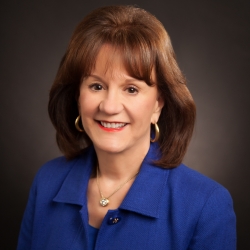Budget woes create even greater need for transportation collaboration
Hand-wringing and soul-searching are an integral part of budget decisions being made by government officials. Across the U.S., 31 states faced budget shortfalls at the beginning of 2017. Legislators in Texas last weekend sent a budget bill to the governor that includes a $1 billion withdrawal from the rainy day fund and an accounting scheme that frees up another $2 billion in funds that were previously set aside for transportation.
In Oklahoma, an $878 million budget shortfall was minimized when the legislature sent a budget bill to the governor that includes raising numerous taxes. Connecticut is facing a possible budget deficit of up to $2.3 billion. In Hartford, Conn., city officials are asking the state to provide millions of dollars to keep the city out of bankruptcy. The city of Houston’s budget gap has been estimated at $90 to $100 million and there is an end-of-June deadline for approving the city budget.
Budget shortfalls create big problems for transportation projects. That’s unfortunate for many reasons. Citizens, and the economy overall, both suffer if transportation is neglected. For working Americans, transportation is the second-highest cost factor and it is the highest for lower wage workers. And, without good roadways, economic development is slowed.
 American taxpayers know the country’s infrastructure is in bad repair. Traffic congestion is rampant. That results in lost productivity, a negative impact on air quality and a huge cost to taxpayers each year. Forward-thinking transportation experts are aggressively seeking solutions through new technology, collaboration and alternative funding.
American taxpayers know the country’s infrastructure is in bad repair. Traffic congestion is rampant. That results in lost productivity, a negative impact on air quality and a huge cost to taxpayers each year. Forward-thinking transportation experts are aggressively seeking solutions through new technology, collaboration and alternative funding.
As Elaine Chao, the new U.S. Secretary of Transportation was introduced to the U.S. House Energy and Commerce Committee, she was challenged to show federal leadership in the advancement of transportation innovation and collaboration. She is an outspoken advocate of public-private partnerships.
Good things are already evident. Many cities, counties, universities and states have not waited. Instead public leaders have been launching all kinds of visionary projects. Citizens are becoming aware of new technology and new options. Most are familiar with vehicle-to-vehicle (V2V) technology, self-driving cars, bus rapid transit systems, personal rapid transit models and drones or UAVs. Even though we’ve not experienced all of this technology yet, it’s obvious that we’re on the cusp of big transportation changes.
It might not be long before motorists in Texas see a “platoon” of heavy trucks as part of a connected vehicle technology project from researchers at the Texas A&M Transportation Institute. Funded by the Texas Department of Transportation, the concept utilizes the technology that provides a vehicle-to-vehicle communication system. The result is a manually driven truck that leads a platoon of trucks with inactive drivers. Researchers say a “train” of trucks will lower fuel consumption, provide fewer emissions and reduce traffic congestion.
 The state of Colorado introduced the first commercial driverless delivery via semi-truck. Seattle transportation officials are preparing to build a new train structure over a floating bridge. The $3.7 billion voter-approved Sound Transit project will connect light rail to the Eastside over the I-90 bridge.
The state of Colorado introduced the first commercial driverless delivery via semi-truck. Seattle transportation officials are preparing to build a new train structure over a floating bridge. The $3.7 billion voter-approved Sound Transit project will connect light rail to the Eastside over the I-90 bridge.
These examples, however, could be compared to the tip of an iceberg. Watch for solar panels in roads and bridges, railways that transport people in personal rapid transit (PRT) modules, high-speed trains, space travel and autonomous vehicles in the not so distant future.
Strategic Partnerships, Inc. (SPI) is leading the way in the rapidly expanding area of public-private partnerships. Learn about SPI’s service offerings in both the public and private sectors by contacting them today.

 512-531-3900
512-531-3900 Request More Info
Request More Info
